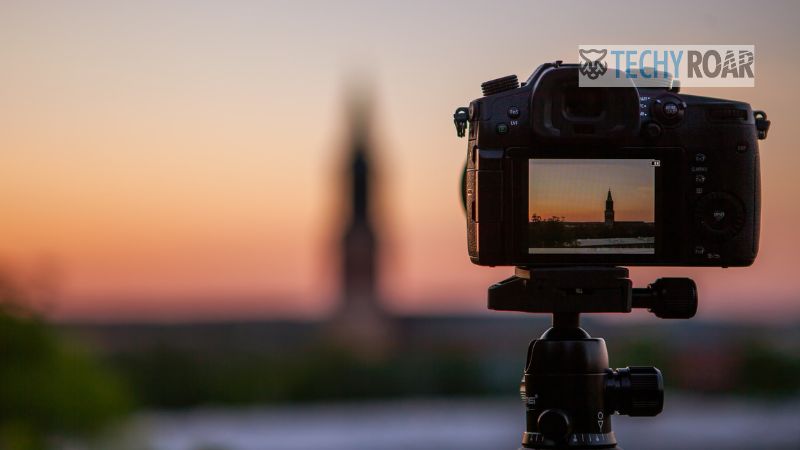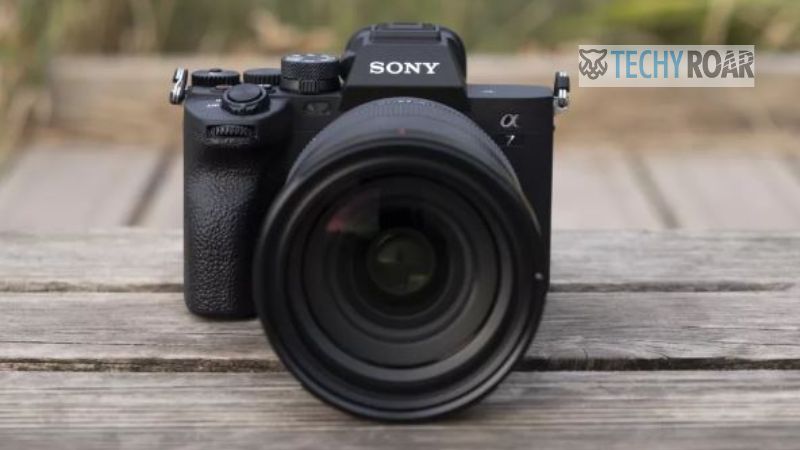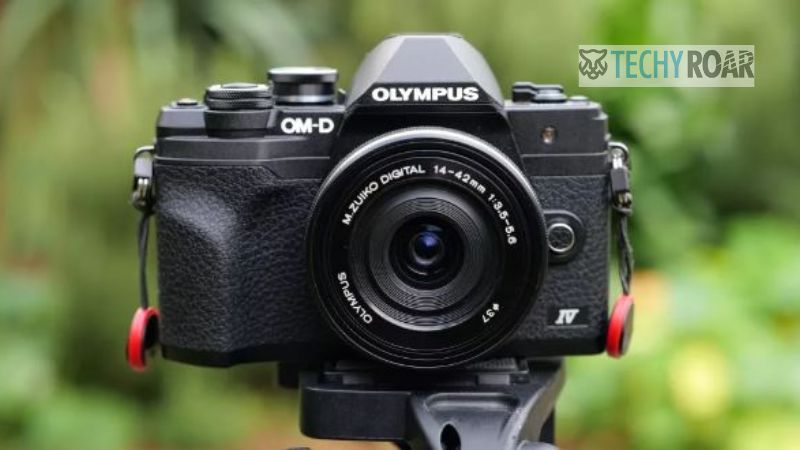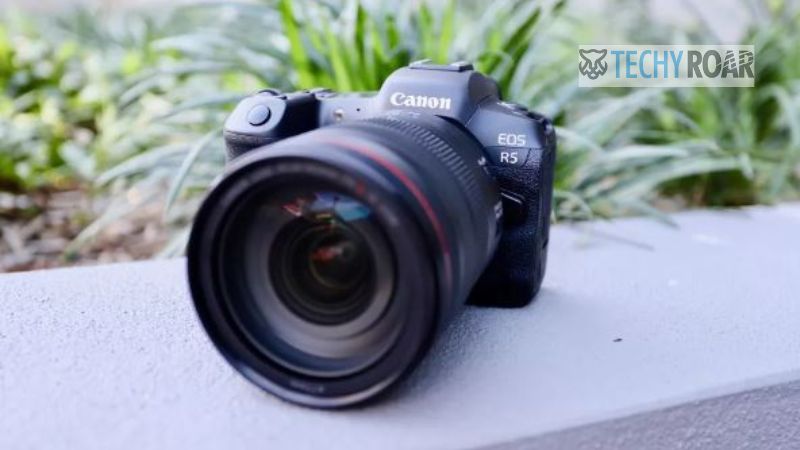Searching for the finest camera for photography? There are plenty of options in 2022. Micro 4 3rds & APS-C cameras have had a successful year thus far, & they now provide a great solution to the various full-frame alternatives that have just entered the market. The tricky part is figuring out which camera is ideal for you, but fortunately, that’s where we’re able to assist. We’ve compiled this ranked list of the most effective cameras for photography relying on innumerable testing hours with in field.
This tutorial has been divided into 3 skill levels so that you can select the one that best suits your knowledge & financial situation. Are you interested to know what camera we now recommend for photography? The Sony A7 IV is that. It is a super-effective all-arounder that is at ease shooting the majority of photographic genres, including portraiture, weddings, & wildlife. Without a doubt, you can depend on it to handle video as well.
However, the Sony A7 IV is an expensive camera, so now we’ve also listed a ton of alternatives that, in these hard financial circumstances, provide greater value. The Fujifilm X-T4 is still a good option for individuals on a limited budget. In the meanwhile, street photographers & hobbyists should investigate the Nikon Zfc & Fujifilm X-S10. The Canon EOS R7 & EOS R10, two very intriguing & reasonably priced choices, are additionally being tested by us. If none of them catch your attention, have a look at our list to the finest inexpensive cameras available right now.
Our comprehensive guide is the result of several testing sessions with the newest digital cameras among the most reputable manufacturers in the industry, like Sony, Canon, Nikon, Fujifilm, Panasonic, Leica, & many others. You may be confident knowing that only the greatest versions are presented here as a result.
Best Enthusiast Camera for Photography
Sony A7 IV
It wasn’t supposed to be simple to follow Sony’s brilliant A7 III, however the A7 IV is a respectable sequel. It’s an intriguing mirror less alternative for hybrids shooters and comes with a powerful 33MP sensor which performs exceptionally in both still & video situations. It is a “great mix of photography capability & video adaptability,” as we stated in the review.
While a price increase means it is no more an entry-level full-frame camera as though its predecessor, the Bionz XR processor provides strong quality that more than makes up for the additional cost.
Additionally, Sony’s A7 IV advantages from improvements like 10-bit video capability as well as a buffer depth that seems to never stop when using a CFexpress card, as well as its industry-leading focusing capabilities. In our studies, we discovered that this buffer is much more comprehensive than the majority of shooters would require, with picture quality favoring resolution above low light performances.
None hybrid camera is perfect; 4K footage has a significant crop, & it isn’t the easiest camera for novices to use. For a comparable cost, the Canon EOS R6 also has quicker burst rates. But the Sony A7 IV rightfully claims the top place thanks to its strong adaptability & greater resolution.
Fujifilm X-T4
Although it is not a full-frame camera, this Fujifilm X-T4 is the greatest APS-C camera humans have ever reviewed. Its combination of capabilities, size, & price make it a fantastic option for amateur shooters. The Fujifilm X-T4 improves on the strong basis of the X-T3 by including in-body image stabilization (IBIS), quicker burst shooting, as well as some clever design changes. A larger battery (that lasts about 500 shots each charge) as well as some better autofocus, that our testing showed to be quick & dependable in just about all situations, adds to its all-around abilities.
The 26MP APS-C sensor of the X-T4 is, in our opinion, the best in its category for still pictures, but it also makes an excellent video camera. The X-T4 supports the in-body image stabilization (IBIS), which is a tremendous plus, with a vast selection of tools as well as a fantastic shooting environment, featuring a completely flexible touch screen. The X-T4 as well as its excellent selection of X-series lenses provides a superb, compact alternative for people searching for a mirror less all-arounder, even if it may cost comparable to some full-frame cameras. Notwithstanding the potential release of a Fujifilm X-H2, it still remains one of the greatest cameras for taking pictures.
Canon EOS R6
Whereas the Canon EOS R5 is excessive for many users, the EOS R6 is indeed an alternative full-frame model that is much reasonably priced and unquestionably among the greatest cameras for photographing available today. This is an extremely worthy upgrade if you currently possess one among Canon’s early mirror less full-frame cameras, such as the EOS R, or any of the company’s DSLRs. According to our evaluation, the EOS R6 is a very good camera for nature or sporting events photography since it has best-in-class autofocus, an excellent in-body image stabilization technology, & burst shooting capabilities.
While having the capacity to record 4K/60p video, the EOS R6 lacks features like DCI 4K & has overheating issues when matched to competitors with a video emphasis, such as the Sony A7S III, thereby making it more suitable for stills shooters. But as a full-frame camera, it’s a terrific (though expensive) choice that offers really amazing focusing, handling, & features, making it one of the finest alternatives available.
Starters Camera for Photography
Olympus OM-D E-M10 MARK IV
Looking to improve your photography abilities with a small mirror less camera? Among the finest possibilities is the OM-D E-M10 Mark IV, which is also very affordable given its feature set. It’s a wonderful choice for novices upgrading from a smartphones or small camera because of its helpful flip-down display & great ergonomics. The E-M10 Mark IV is a version that can truly grow alongside you because it’s a Micro 4 3rds camera and offers one of the largest options of lenses available.
Its shortcomings include the absence of a microphone & USB-C connectors as well as a somewhat slower focusing than competitors such as the Sony A6100. The E-M10 Mark IV is one of the handful cameras at this price bracket that have in-body image stabilization, a very useful benefit for handheld shooting, so even if the latter is a wiser alternative for sporting or motion photography, we found that the former is a more enjoyable camera to utilize in our testing.
Nikon Z fc
The Nikon Z fc was referred to in the review as a “beautiful, easygoing camera with such a competent specification.” The Nikon Z fc is virtually the same as the Nikon Z50 underneath its gorgeous vintage exterior. Given that perhaps the Z50 is a mid-range mirror less wonder, it is hardly a complaint. The 20.9MP APS-C sensor, hybrid autofocus technology, & efficiency metrics are all the same. This entails 30fps 4K footage that is stable, detailed stills, & burst shooting at 11 frames per second. The physical construction is novel. The Nikon Z fc pays homage towards the Nikon FM2 by having almost the same size as well as a similarly eye-catching casing. The design incorporates a ton of retro influences, from of the dials to font.
But the upgrades go beyond the surface: the Nikon Z fc has a vari-angle screen, as opposed to the Z50’s rotating touchscreen. That opens up a wide range of adaptable framing choices, allowing it to be utilized with a tripod or turned away for a really retro look. Fans of handle still might prefer the Z50’s predecessor because it doesn’t have the same deep DSLR-like grip that the Z50 has. However, the Nikon Z fc is a persuasively imaginative proposition when coupled with the brand-new Nikkor Z 28mm f/2.8 SE prime lens. Additionally, for such a camera having separate exposure, ISO, & shutter speed settings, it is remarkably inexpensive.
Fujifilm X100V
This Fujifilm X100V really shouldn’t sound right on paper: a tiny camera has retro styling, a fixed 23mm f/2 lens, as well as a high price. The X100V, however, is inspired by the earlier models that have become legendary amongst street photographers. The modest vintage body has a really distinctive quality that makes it understated & timeless.
The X100V preserves what great & only modifies what is necessary. It now has a very useful rotating touchscreen as well as a body that is robust to the elements. Regarding street & portraits, the series’ fixed aperture lens arrangement has consistently been excellent, & the outcomes are even stronger now since Fujifilm has incorporated a fresh 26.1MP APS-C sensor combined with the most recent X-Processor 4. Excellent noise reduction, quicker autofocus, & greater picture quality. There is nothing else that compares to it, despite the fact that it is specialized & not inexpensive.
Best Advanced Cameras for Photography
Canon EOS R5
This Canon EOS R5 is considered one of the greatest cameras this photography giant ever has produced if you think of it as a professional stills version with just some excellent video capabilities. It undoubtedly has video restrictions when compared to competitors such as the Sony A7S III, especially when it comes to recording lengthier clips. However, after reviewing it, we concluded that it was excellent for anybody wishing to capture amazing still images in practically any setting, either it be for wildlife or studio photography.
The EOS R5’s autofocus is especially noteworthy since it provides highly precise & dependable subject-detection & tracking, especially when it comes shooting individuals or animals. You always get a fantastic EVF with 5.76 million pixels, a body with such a design that would seem comfortable to DSLR users, as well as mechanical shutter burst shooting at 12 frames per second. Even while it can only record in brief bursts, the video quality is still better than that of cameras such as the Sony A9 II & Nikon Z7. This Canon EOS R5 is the next-generation mirrorless camera many professional photographers have already been expecting for, with such a growing selection of (although expensive) RF lenses.
Sony A7R IV
The Sony A7R IV checks well all boxes that landscape shooters frequently require, including megapixels, dynamic range, & high durability. Exceptional detail is produced by its 61MP camera, as well as its Pixel Shifting mode allows you to increase resolution. In addition to being convenient to capture breathtaking landscapes, but you also have access to Sony’s superb Face & Eye AF track for shooting people.
Whereas the weather-sealing of the A7R IV is a significant improvement over the A7R III, a strong grip making it pleasant to use over extended days inside the field. The touchscreen settings are a little less extensive than those on other modern Sony cameras such as the A7S III, but you still get a brilliant, clear electronic viewfinder with 5.76 million dots. Even yet, the A7R IV remains the much more desired camera in its class &, in my opinion, even produces passable video. It continues to be among the greatest cameras for taking pictures on picturesque excursions.
Canon EOS R3
This Canon EOS R3 is now at the top of something like the mirror less performance pyramid, while having the appearance of a DSLR from such a decade ago. It combines the hybrid intelligence of the EOS R5 well with bulky physical aspect of the 1D X Mark III and adds a ton of cutting-edge technology to the mix. Although the 24.1MP CMOS sensor may appear underwhelming for such price, the stacking construction allows for quick 30fps raw burst photography. Additionally, the EOS R3 can internally record 6K raw video at 60p.
The EOS R3 comprises one of the most sophisticated fast-action mirror less cameras yet created, supported with improved AF tracking, featuring Eye Control AF, which enables you to select focus points simply by gazing at them via the viewfinder. Its articulated touchscreen is brilliant & effective, as well as its control scheme will be comfortable to experts because it is made robust with magnesium alloy. Indeed, it is large, pricey, & obviously excessive for beginners. But our assessment process revealed to us that it has become the new standard choice & unquestionably among the greatest cameras in the globe for photographers for paid photographers who refuse to negotiate on image quality,, quickness, or efficiency in the field.
How to pick the ideal camera for taking pictures
When purchasing a digital camera, its sensor size is indeed the essential factor to consider. Although bigger isn’t necessarily better, it provides a decent indication of the type of camera, the cost of such lenses, as well as the target market. In general, APS-C & Micro 4 3rds cameras are intended for both professionals & enthusiasts, but full-frame versions are often reserved for more experienced photographers with larger budgets. Small cameras featuring 1-inch sensors are utilized for daily photography & travel zooms.
The majority of photographers believe viewfinders, whether optically or electronically, to be crucial, so keep an eye out for them, as well as handling. A secure grip is necessary if you intend to utilize longer lenses. For instance, bright prime lenses generally excellent for portraits & street photography, while wide-angle zooms are much more practical for landscape photos. You also should take into account the lenses you’re most likely to require for your preferred forms of photography. It is frequently preferable to select the camera system, comprising lenses, that is suitable for you rather than just the camera.
Are DSLRs the greatest cameras to use?
Long associated with “serious” photography, DSLRs are not anymore at the top of a camera technology food chain. The newest lenses & focusing technologies from the industry’s top camera companies nowadays are available for mirror less cameras that swap out the optical viewfinder of a DSLR with an entirely electronic EVF. In recent years, and neither Canon nor Nikon have introduced a modern DSLR. This is why mirror less cameras, instead of DSLRs, predominate in our list above.
This doesn’t imply that you ought not to think about purchasing a DSLR for shooting. Their major advantage nowadays is value for money. Because they don’t have an electronic viewfinder, they are often less expensive than mirror less counterparts, as well as because they are more mature, they offer a large variety of reasonably priced lenses. Great used DSLRs include vintage models such as the Canon EOS 6D. However, mirror less cameras now represent the wiser long-term expenditures.




